Collecting postage stamps is one of my dear hobbies and so I decided to write a blog about philately and its history.
Etymology of Philately
The word philately is formed from the Greek words philos (friend, amateur) and attelês (frank, free of any charge or tax), and because of this formation philately is usually defined as the act of collecting stamps, especially those considered rare. But it is much more than just a hobby of collecting, philately can be considered a science and an art that people from the most diverse places in the world love to study and know about.
History of the Postage Stamps and Brazil
The first postage stamp issued in the world is known as Penny Black, and appeared in England on May 6, 1840, after a reorganization promoted in the country's postal service by Rowland Hill. Until that date, the payment for the service of transport and delivery of correspondences was made by the receiver. The arrival of the postage stamp was fundamental to the success of the postal reform, which has revolutionized postal services worldwide. The first postage stamps in the world brought effigies (like those of Queen Victoria, in Penny Black), coat of arms and ciphers.
Brazil launched its first postage stamp in 1843, the worldwide famous Bull's Eye series [Série Olho de Boi], and was recognized as the second country in the world to issue postage stamps. After that, in 1844, other stamps were issued and were known as "inclined" postage stamps, such as Goat Eyes [Olho de Cabra], in 1850, and Cat's Eye [Olho de Gato], in 1854.
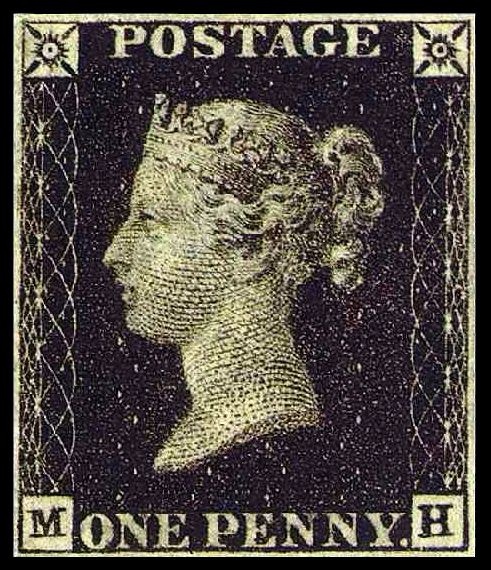
Penny Black, first postage stamp issued in the world. Photo credit: Wikimedia Commons
Commemorative Postage Stamps
The first commemorative postage stamps were issued in the 1900s to celebrate the 4th Centenary of the Discovery of Brazil, but only in the year 1906 commemorative issues had some repercussions abroad, alluring to the 3rd Pan American Congress. The first commemorative postage stamp appeared in 1904, in the city of Curitiba, Paraná, during the Paraná Exposition [Exposition of Paraná], an event that commemorated the 50th anniversary of the state's political emancipation. In 1920, the airmail service was created bringing to the scenario exclusive postage stamps in the period from 1927 to 1934.
The first commemorative series appeared in 1938, commemorating the 1st International Philatelic Exhibition (BRAPEX), held in Rio de Janeiro. Until 1968, the great majority of the Brazilian commemorative postage stamps were printed just in one color, showing the same techniques and deficiencies of the ordinary stamps. This year brought significant improvements in the printing process, especially regarding the type of paper, the techniques used and the security mechanism against counterfeiting. Since the creation of ECT [Empresa de Correios e Telégrafos] in 1969, promising artists and designers were hired to improve the quality of our commemorative issues and the Brazilian Mint [Casa da Moeda do Brasil] re-equipped to ensure an impression compatible with the new standards, among the measures that were adopted to increase philately.
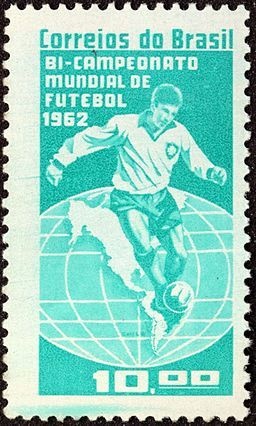 Commemorative postage stamp of 1962. Photo credit: Wikimedia Commons
Commemorative postage stamp of 1962. Photo credit: Wikimedia Commons
As a result of the modernization of its artistic design, Brazilian postage stamps became more attractive and competitive, obtaining important international awards. Among the awarded issues one can highlight the series of "São Gabriel Padroeiro dos Correios" (1973), the postage stamp "Imprensa - Bicentenário de Hipólito da Costa" (1974), the postage stamp "Dia Nacional de Ação de Graças" (1976), the series "Folguedos e Bailados Populares" (1981) and the series "Literatura de Cordel - Lubrapex 86" (1986).
In the Brazilian Philately it is also worth mentioning the first stamp issued in the world, in 1974, with subtitles in Braille, and the second postage stamp of the world with three-dimensional images (holographic), released in 1989. In 1996 there was another important milestone in the process of diversifying and improving the design of philatelic issues: the "Arte em Selo" Contest, held on the occasion of the 23rd São Paulo Art Biennial, selected among the 3000 participants the top 50 artists to work in the process of creating Brazilian postage stamps.
Other Thematic Conception and Technology
In 1997, products with a new visual and technological thematic design were launched, such as the stamp sheet for the campaign "Criança e Cidadania" and for the auto service machines, the auto adhesive stamps ("Cidadania" series) and the franking labels.
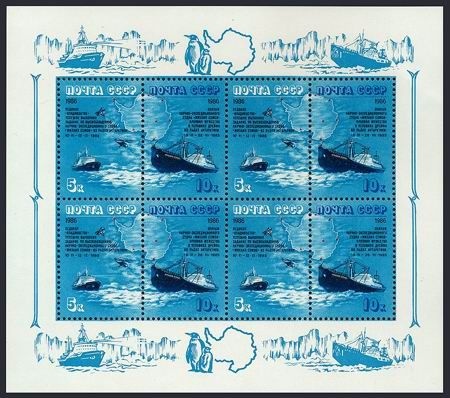 Example of postage stamp sheet from Russia. Photo credit: Wikimedia commons
Example of postage stamp sheet from Russia. Photo credit: Wikimedia commons
With the proposal of always offering stamps of significant thematic and artistic appeal, in 1998 the ECT launched, among others, a stamp sheet on the theme EXPO'98 - Oceans, and another to honor the XVI World Cup, Football-Art, demonstrating that philately is always alongside the most important events in Brazil and abroad.
In 1999, important issues were launched, with special emphasis on the series referring to the "National Parks of Brazil - Forest Fire Prevention", printed on recycled paper, with aroma of burnt wood, aiming to raise awareness of the need to preserve the riches about our environment. Another issue that deserves to be highlighted is the one that focused on eight species of "Pantanal Fishes - Freshwater Aquarium" which, in addition to strong thematic appeal, represents the second Brazilian issue printed with details in holography.
In 2002, ECT launched the first Brazilian round seal, issued within the "World Cup Champions of the 20th Century". Countries that have already won the World Cup - Argentina, Germany, Italy, France, Uruguay and England - participated in this great philatelic project, along with the Brazilian Post Office.
Continuing the process of diversification, improvement of the design and use of technological innovations in philatelic production, in 2003, the Christmas stamp in triangular and auto adhesive format and the stamp referring to the fight against HIV/AIDS were launched, in a heart format. In 2004, the main novelties were: the application of the stochastic reticule in the emission "Preservation of Mangroves and Tidal Zones", providing effects of micro pigmentation, and the cut of the Christmas stamp, in Santa Claus format.
Brazilian Postage Stamps and the Empire Issues
1. At the time of the creation of the Bull's Eye, the first Brazilian and second postage stamp of the world, the Emperor D. Pedro II did not allow to focus his effigy on the stamp, so that the stamps that would be used by the obliteration service did not smear its sovereign face. This vision prevailed for some time, because three other series were issued only with ciphers: Inclined (1844), Verticals (1850) and Colored (1854). These last two issues were called Goat's Eye and Cat's Eye.
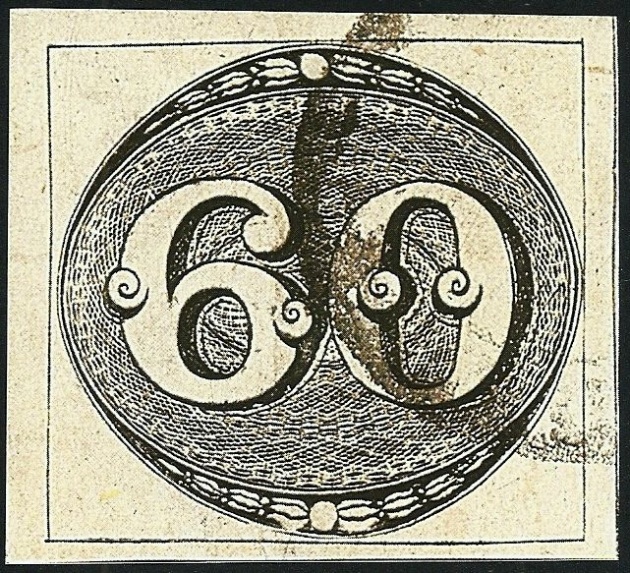 Bull's Eye, first stamp of Brazil. Photo credit: Wikimedia Commons
Bull's Eye, first stamp of Brazil. Photo credit: Wikimedia Commons
2. When the Emperor discovered that a postage stamp could spread his prestige in the national and international political scene, D. Pedro II did not hesitate to allow numerous emissions to focus on several phases of his life. Thus, from 1866, the first stamps appeared with the portrait of the sovereign. Some of the models in this series were also the first Brazilian stamps perforated and bearing the name of the country and its monetary unit, innovations that brought them closer to the standard used by postage stamps around the world.
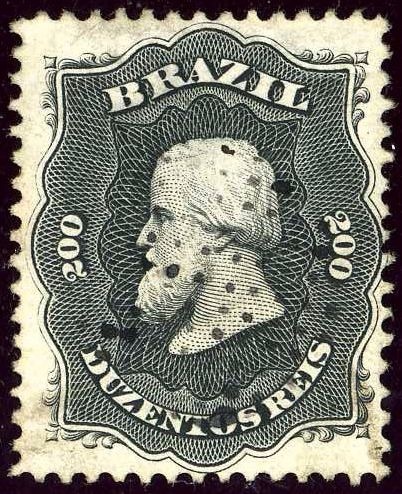
First postage stamp depicting the Brazilian sovereign D. Pedro II. Photo credit: Wikimedia Commons
3. The first model of the series, which featured a D. Pedro II with a dark beard, was succeeded by several others with different designs, colors and values: white beard (1878), green and white colors (1878 and this was the first Brazilian emission in two colors), little head (1881) and big head (1882).
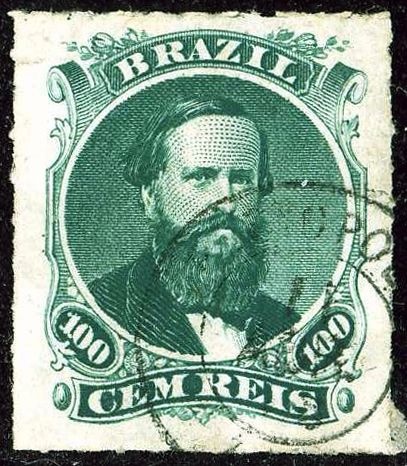 First colored stamp issued in Brazil depicting D. Pedro II. Photo credit: Wikimedia Commons
First colored stamp issued in Brazil depicting D. Pedro II. Photo credit: Wikimedia Commons
The first philatelists
It is believed that the first philatelist in the world was a Frenchman named August Macim. Since the creation of the first postage stamps, on May 6, 1840, he kept copies of the stamps that came into his hands. For 15 years he collected stamps, having obtained a beautiful set, which he disowned for 100 francs to buy medicines when he was attacked by a terrible disease from which he died.
An advertisement published in 1841 in The Times of London, when there were only two types of stamps (penny black and two-pence) issued by Great Britain, mentions that an English lady managed to collect sixteen thousand stamps.
It is known that Dr. John Edward Gray, of the British Museum, also started his collection in 1841, as did the French Vetzel. On March 22, 1851, T. H. Smith published in the London newspaper Family Herald a small ad asking the postal stamp holders to sell the available ones and to exchange theirs in duplicate. Thanks to this announcement, it must not have been difficult or too expensive for Smith to develop his stamp collection when, worldwide, there were only 154 of them issued.
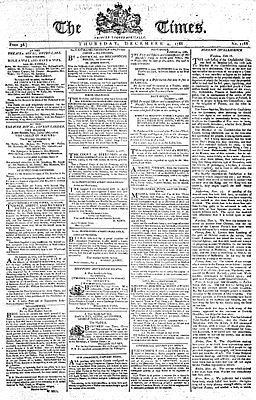
The Times, London newspaper. Proto credit: Wikimedia Commons
I selected this nice video about an introduction of stamp collecting. I hope you all like it!



